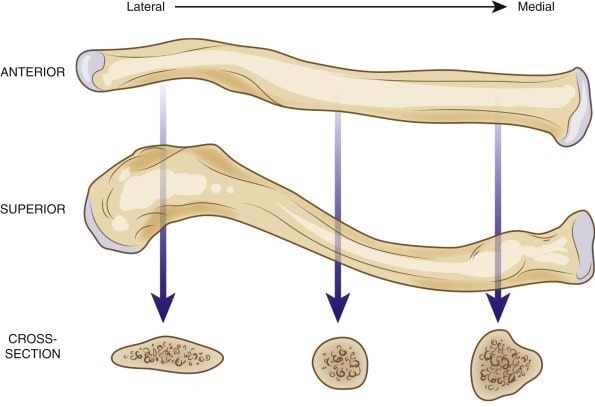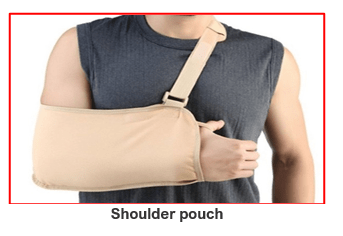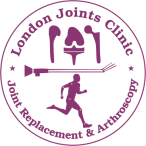Clavicle Fractures
The clavicle (also called the collar bone) is the bone that connects your sternum (breastbone) to your shoulder. It is an ‘S’ shaped bone which effectively connects the central axial skeleton with the upper extremity via the sterno-clavicular joint (SCJ) and the acromio-clavicular joint (ACJ) respectively.
It contributes to the motion and stability of the upper extremity. It, along with its subclavius muscle, provides protection to the underlying neurovascular structures.
Clavicle fracture, also called broken collarbone, is a very common injury seen in children and young adults, especially under the age of 25 years.
This fracture normally occurs after a forceful fall onto the shoulder (during sports or work) or a motor vehicle accident. The most common sports associated with clavicle fractures include contact sports such as football, hockey and martial arts as well as impact sports such as skiing or motor racing.

Clavicle fractures are common due to the clavicle’s superficial location, its thin midshaft region and the forces transmitted across it. The midshaft region is most commonly fractured as it lacks any muscular or ligamentous support
Clavicle fractures are diagnosed based on patient’s history of injury, their symptoms, clinical examination of the shoulder region and x-rays of the clavicle.
A fractured clavicle causes pain, swelling and bruising at the fracture site. Patient’s hold their arm by their side to support the injured limb. Their shoulder may be slumped downward and forward. They may also have a bump and tenderness around the area of the break. There is difficulty in moving the shoulder due to the pain. Attempts to move the shoulder increases the pain and there may be an associated grinding sensation.

An X-ray of the clavicle is taken to identify the location of the fracture. A CT scan may be needed in some cases with multi-fragmentary fracture patterns or complex injuries, especially if involving any joints. It helps in planning definitive treatment for the patient.
Clavicle fractures are classified based on their location.
Group 1 – Fractures of the midshaft region. 75 -80 %. Younger age group
Group 2 – Fractures of the lateral (outer) third region. 15 – 25 %
Group 3 – Fractures of the medial (inner) third region. < 5 %
 They are given pain medications regularly for the first few days for pain control.
Patients are encouraged to do ice packing at the fracture site 4 to 5 times a day to reduce swelling and pain.
Patients are also encouraged to do gentle shoulder and elbow exercises, as tolerated, to minimize stiffness and weakness in their shoulder.
They are advised to avoid painful activities like stretching or overhead activities for first few weeks.
Clavicle x-rays are done periodically to confirm status of the fracture fragments and also signs of fracture healing. Physiotherapy is carried on for 2 to 3 months post injury.
Surgery:
Surgery may be required in cases of displaced fractures, open fractures, fractures of the lateral third and fractures associated with other upper extremity injuries. Surgery is performed to re-align the fractured ends and stabilize them during healing. Surgery often involves use of pins or plates and screws to maintain proper position of the bone during healing.
Plate and Screws fixation
During this surgical procedure, an incision is made over the clavicle bone. The fractured ends are identified and then realigned into normal position. Special metal plate that match the contour of the clavicle is used to hold the bone fragments in place with help of specialised screws. These plates and screws are usually left in the bone. If the implants cause any irritation, they can be removed after fracture healing is complete. Normal waiting period is 12 to 18 months.
They are given pain medications regularly for the first few days for pain control.
Patients are encouraged to do ice packing at the fracture site 4 to 5 times a day to reduce swelling and pain.
Patients are also encouraged to do gentle shoulder and elbow exercises, as tolerated, to minimize stiffness and weakness in their shoulder.
They are advised to avoid painful activities like stretching or overhead activities for first few weeks.
Clavicle x-rays are done periodically to confirm status of the fracture fragments and also signs of fracture healing. Physiotherapy is carried on for 2 to 3 months post injury.
Surgery:
Surgery may be required in cases of displaced fractures, open fractures, fractures of the lateral third and fractures associated with other upper extremity injuries. Surgery is performed to re-align the fractured ends and stabilize them during healing. Surgery often involves use of pins or plates and screws to maintain proper position of the bone during healing.
Plate and Screws fixation
During this surgical procedure, an incision is made over the clavicle bone. The fractured ends are identified and then realigned into normal position. Special metal plate that match the contour of the clavicle is used to hold the bone fragments in place with help of specialised screws. These plates and screws are usually left in the bone. If the implants cause any irritation, they can be removed after fracture healing is complete. Normal waiting period is 12 to 18 months.
 Pins
Placement of pins may also be considered to hold the fracture in position and the incision required is also smaller. They often cause irritation in the skin at the site of insertion and have to be removed once the fracture heals.
Pins
Placement of pins may also be considered to hold the fracture in position and the incision required is also smaller. They often cause irritation in the skin at the site of insertion and have to be removed once the fracture heals.

The complications with clavicle fractures can arise due to:
the injury mechanism, conservative treatment or surgical treatment.
These can be:
- Damage to underlying blood vessels or nerves in a high energy trauma (vehicular accidents)
- Damage to the lungs – pneumothorax
- Shortening of the clavicle length – may reduce performance with throwing activities
- Delayed healing
- Non-union
- Deformity of the clavicle (malunion) if treated conservatively
- Thoracic outlet syndrome due to malunion and large callus (healing bone)
- Wound healing problems or Scar hypertrophy with surgical fixation
- Numbness below scar due to damage to superficial nerves
- Prominent metalwork under skin
- Infection
- Need for removal of metalwork in some cases
- Post-traumatic arthritis
- Refractures
Book An Appointment
Private Clinics : Locations & Directions
London Joints Clinic (Pune)
Address
Office S 5, 2nd Floor, North Block, Sacred World Mall,
Opp Sacred Heart Township, Near Jagtap Chowk,
Wanawadi, Pune 411040
Monday to Saturday
6 PM to 9 PM
Appointments
Hospitals OPDs : Locations & Directions
Jupiter Hospital (Baner)

Address
Lane 3, Baner- Balewadi Road,
Prathamesh Park,
Baner, Pune 411 045
Monday to Saturday 11 AM to 4 PM
Appointments
Contact us
Dr Anand Jadhav has a centralised appointment system for all locations across various hospitals and clinics in Pune & PCMC areas
Appointment Bookings & Requests can be made by any method :

